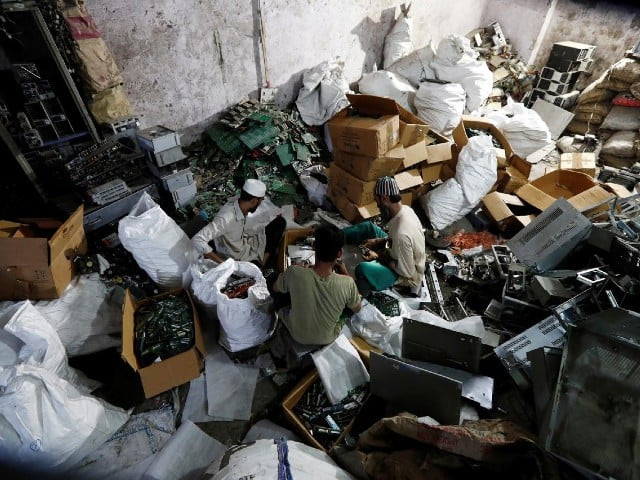Pakistan generates close to 50 million tonnes of solid waste per year, almost 135,000 tonnes per day. Out of this, Karachi alone produces 10% or 13,500 tonnes of solid waste per day. Most Pakistanis, and especially Karachiites, suffer from a lack of solid waste collection, where it is scattered throughout the city. But the sad reality is, even if this waste was collected, landfills are full to capacity and do not have space to store this extra waste.
Picking up waste and dumping it far away out of our sight is merely transferring a problem and not solving it. One thing that Covid-19 has taught us is that you can live in gated communities, and build high walls but environmental degradation and disease don’t discriminate. Our cities, especially Lahore and Karachi, constantly make it to the top of the list of areas with the world’s worst air quality. Not to mention microplastics in water and food grown on trash also impact our health. According to a study by the World Wildlife Fund, an average person could be ingesting approximately five grams of plastic every week. We have come to a point where the accumulation of waste in our environment will keep impacting the quality of our lives no matter where we decide to dump the garbage.
While we must demand for the efficient collection of waste and proper recycling we need to move beyond just supply side solutions and environmentalists around the globe are focusing on the root of the problem. Consumer side solutions prove to be far more cost effective and environmentally friendly as they act on the very decision to purchase a product. It is our collective consumption of products that dictate how much garbage is produced and how suppliers decide what they will sell. We can actually make a difference and can start today.
Minimal-waste purchase for source reduction
When some people think about waste reduction they automatically think that it will be inconvenient and will add to their expenses while the measures they choose to take are also often minimal. We automatically go from one extreme, where we don’t care enough, to the other, usually centred on zero waste and become disillusioned in the process. Any sustainable change requires us to make gradual shifts, one habit at a time. However we need to realise that the only long term solution towards our waste problem is for society to move towards making conscious decisions on packaging.
Going to minimal waste involves changing how we buy, what we buy and where we buy. Here’s a list of things we can do:
- Say no to the plastic bag and or reuse your cloth bag. Sometimes plastic bags are offered for even an item or two and we as consumers usually don’t say no. We need to change that as most single use thin film plastics cannot be recycled nor do they biodegrade and these plastics may be present in our environment for at least 400 years.
- Using biodegradable and compostable alternates. Toothbrushes, single use cutlery, plastic bags and pouches, all have biodegradable and compostable alternates. There are plastics that are supposed to be “biodegradable” but that just means they degrade into smaller pieces but do not assimilate into the environment. Even if the particles are tiny, they are still plastic and even more dangerous.
- Encouraging local stores to take back shopping bags. During Covid-19 many people have been forced to get grocery delivered to their doors. One step you can take is to encourage them to take the bags back and reuse them.
- Buying grains, oils, nuts and other commodaties according to need and not according to prepackaged quantities. We often end up buying in bulk and the food items can sometimes go bad before we use them. Buying stuff in controlled quantities may help bring down food wastage.
- Recycle, recycle, recycle. We can never go to zero aste even if we try. We will end up with some sort of packaging; we will end up with extra clothes or food. So one way to protect the environment and lower waste is to recycle all you can, whether in the form of clothes that become hand me downs in the family, or just passing on paper, cardboard, plastics, tins and even plastic to someone who will recycle it, you will contribute to the lowering of waste in the world.
Entities like Davaam Life are trying to work on creating sustainable ideals with a single outlet and online operations. Davaam Life hopes to let consumers redefine their purchasing practices by looking at more organic, as well as green products, while hoping to encourage the practice of recycling. This may create a shift in individual consumer practices, which lead to a change in demands, it may also compel corporations to rethink their marketing strategies. This may make them adopt for sustainable packaging options and product delivery practices. Furthermore, following the basic economic principle of demand fuelling the supply, such ventures may prove costly at the start but as they become the norm, the price will also come down. In conclusion, have you ever wondered why a toothpaste tube, despite adequately protecting the product ,is additionally packed in a box that you throw away? More consciousness about the waste we produce and a collective effort can bring about a change in society.



COMMENTS
Comments are moderated and generally will be posted if they are on-topic and not abusive.
For more information, please see our Comments FAQ